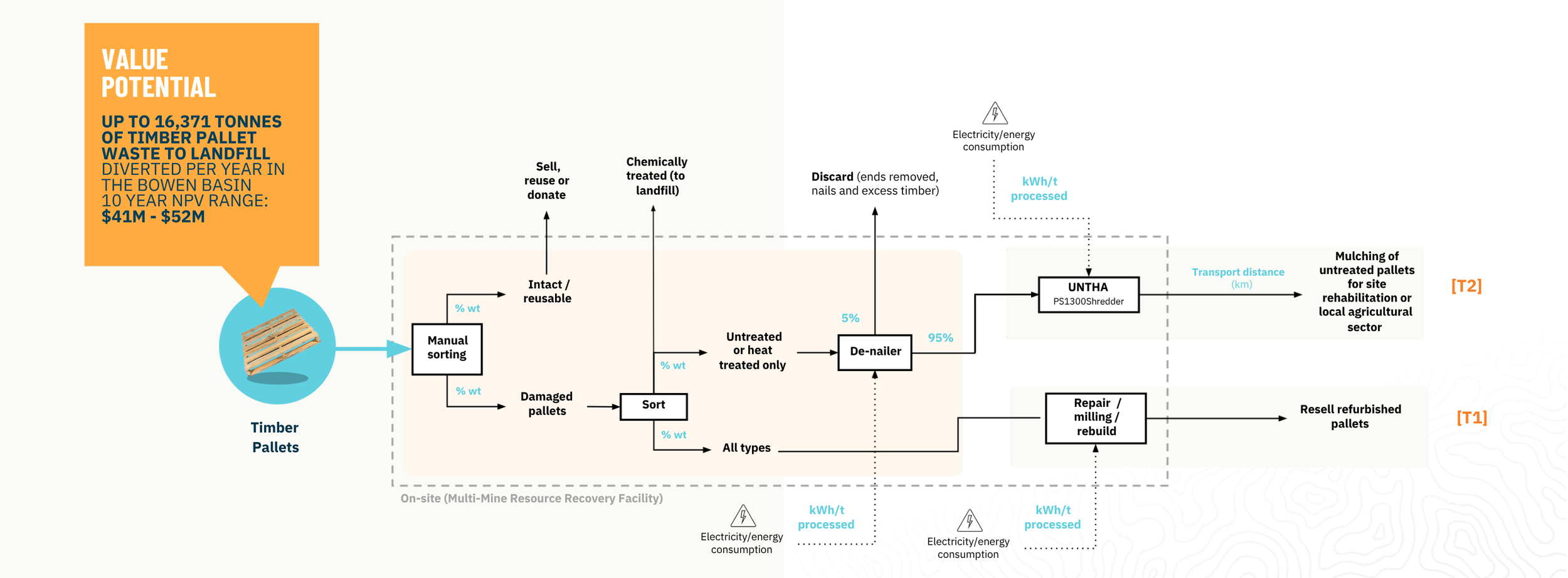Let's Talk Timber Paletts
Timber Paletts
Timber pallets are flat, platform-like structures, designed to support goods during storage and transport, allowing for easy lifting and movement by forklifts or pallet jacks. They are a crucial component of logistics and supply chains worldwide.
What is happening to them today?
Once used or damaged, timber pallets are often discarded. Thousands of pallets are chewed through across the Basin each year, often forgotten after a single-use and destined for landfill. This places additional pressure to harvest more trees, convert more land, and release more greenhouse gas emissions from commercial timber production. Not only is this bad practice, it’s a circular opportunity waiting to realise untapped value.
Mine sites can use hundreds of timber pallets every year, with generation rates varying from 250 to 1350 tonnes per year, representing an average timber pallet usage of approximately 457 tonnes per year. If this value is scaled up to the average timber pallets usage across the whole Basin, that equates to approximately 16,371 tonnes of timber pallets used per year.
Proposed solutions for timber pallets
Two recovery solutions were analysed for timber pallets, addressing both intact and damaged materials. These pathways include reuse, and remanufacturing, followed by mulching to achieve full material recovery.
Solution 1: Remanufacturing through repair and rebuilding
Damaged pallets can be refurbished by dismantling, sorting, and reassembling components into new or hybrid pallets. Performed on-site with basic workshop equipment, this process reduces reliance on virgin timber and diverts waste from landfill. Rebuilt pallets can be used in mining operations or sold into secondary markets.
Solution 2: Mulching of untreated pallets for site rehabilitation or local agriculture sector
Heavily damaged pallets made of timber are processed into mulch for use in landscaping or mine site rehabilitation applications. After de-nailing to remove hardware, the pallets are shredded using equipment. The mulch can be applied on disturbed land to support erosion control and revegetation. While heat-treated pallets are accepted, chemically treated pallets are excluded due to chemical contamination concerns.

